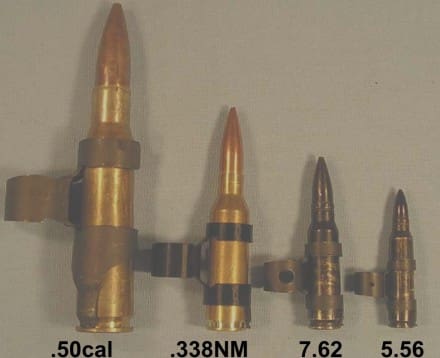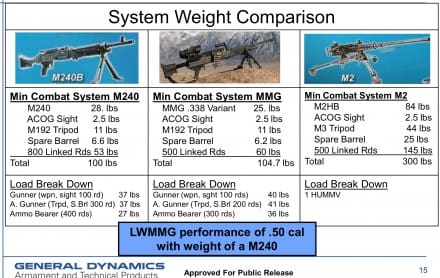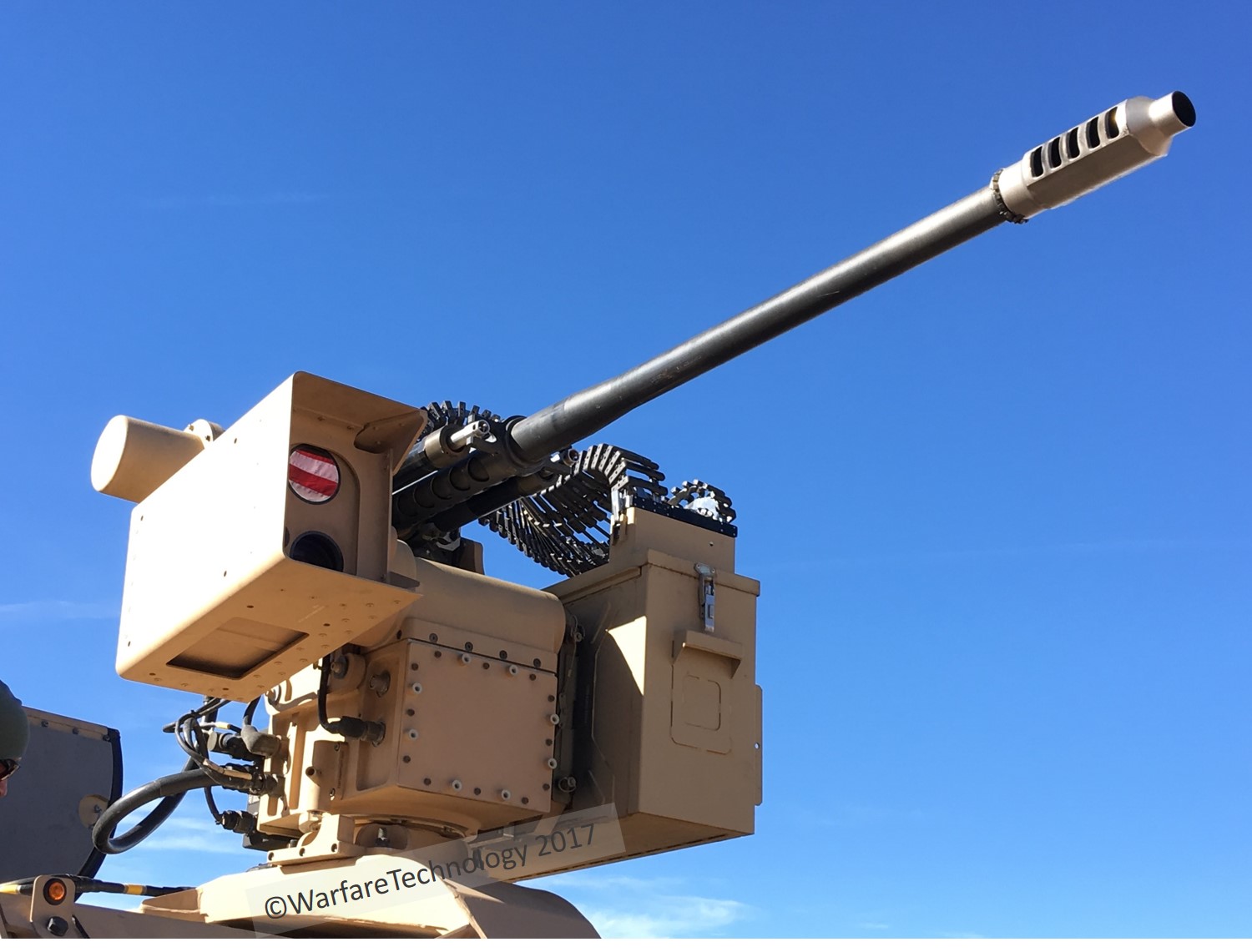
Vicious_CB
-
Posts
116 -
Joined
-
Last visited
Content Type
Profiles
Forums
Blogs
Gallery
Downloads
Events
Posts posted by Vicious_CB
-
-
M855 Green Tip for comparison


- LostCosmonaut, Ramlaen, Collimatrix and 1 other
-
 4
4
-
M855A1 in ballistics gel with velocity and pressure



- LostCosmonaut, Ramlaen, LoooSeR and 1 other
-
 4
4
-
On 6/1/2018 at 1:42 PM, Ramlaen said:
The Marines need to fast track this, they're gonna be in the hurt locker when everyone gets issued a 12lb M27 IAR.
-
On 10/27/2017 at 6:24 PM, Ramlaen said:
Thanks for making this. Any idea why ze germans chose a HEAT shaped design? Perhaps using existing shell design helped to speed up the design process because I cant imagine the shape is properly optimized to punch through concrete like the other HE rounds are designed to do.
Does any round offer an advantage over the others or do they all the pretty much the same capability?
-
Everyone thought the LSW versions of their assault rifles were a good idea too back in the 80's

What I think is a more significant development: Knight's Armament LAMG
8.6 lbs (3.9 kg) low cyclic rate(575-625 RPM), and constant-recoil/spring run-out operation

-
Now we're getting into terminal ballistics which is a whole separate issue than suppressive effect. As Ive stated earlier, if you want more suppressive effect just develop a 5.56 "whistling bullet". Now you have more shitting your pants effect in the same sized package with the same recoil.
If you want increased terminal ballistics or barrier penetration then 7.62 NATO is pretty inefficient way of delivering your payload. I think one of the biggest aspects of the A1 family that no one is talking about is that its a "modular bullet". If the need arises you can spin up production of tungsten carbide penetrators and simply start inserting the new cores into the latest production. I think thats probably why they were pushing the pressure limits to achieve higher velocities since velocity plays a huge role in punching through armor plates. The Big Army has been pretty obsessed lately with making plate busting weapons and ammo that they're willing to overlook the more practical aspects of fielding such weapon systems...
-
5 hours ago, Duncan said:
Suppression is definitely critical. Most infantry small arms fire is to suppress an enemy force. You're hitting them when you can, but most times its fire directed to either pin an enemy in place, or else to get them to stop shooting at you.
And yes, caliber is a factor in suppression. .22 LR would be less suppressive than 5.56, which is less than 7.62 NATO, which is less than 338 Norma Mag, which is less than .50 Cal, etc. Penetrative abilities against cover, the accuracy potential of weapons, the fear of automatic weapons fire (volume), the knowledge that heavy weapons focused on your position means bad things, all are incentives to increase caliber to benefit suppression.
But there is a con to that. Increasing round size in width and case length increases weight and bulk, the result is either carrying less or carrying same amount of lighter ammo at heavier cost. Another factor is recoil. Unless massively braked, Williams 7mm GPC is going to have much higher felt recoil and muzzle rise than something in 5.56, so its going to be harder to control on full auto.
So play pro and con game. In the end, the reality is that 5.56 is good enough considering most bullets under 338 Norma Mag aren't really deadly or accurate enough to do a fantastic job at suppression. But like you wrote, HE does the best job. So the smart play is to add more HE deliverable weapons, large frag footprints, airbursting if possible.
But even that has some major cons. The most obvious are ROE concerns where new infantry doctrine is to sling HE rounds everywhere, commanders are simply not going to like that. The fratricide issue will be a problem. Range time with HE is exponentially harder to do because of UXO problems and safety concerns. Cost is a huge dilemma, Carl Gustaf and other similar weapons, those rounds aren't cheap.
To clarify suppression vs suppressive effect. Suppression(the ability to diminish or stop the enemy from participating in battle) is an absolutely critical aspect of small arms vs suppressive effect(the ability of a munition to scare the shit out of the enemy) which is nearly impossible to quantify as it varies from person to person.
However I am not convinced that there is a significant difference between the calibers of individual weapons 5.56 vs 6.5 vs 7.62 in their ability to have a suppressive effect.
My opinion is that you are better off carrying more ammo. And I think we are in agreement here.
More ammo = you can afford to keep up a higher volume of fire for longer. And when you can keep up a larger volume of fire for longer than the enemy can, you achieve fire superiority which is the best way to suppress in the first place which trumps the whole shooting less bullets with some larger radius sonic boom or however you want to quantify suppressive effect.
-
On 5/29/2018 at 7:50 AM, Duncan said:
One would still need small arms, not every situation involves infantry shooting something necessitates blowing something up, sometimes something just needs a bullet or two.
But the OICW was pushed because studies showed how effective, in theory, programmable air bursting fragmentation rounds would be. Unfortunately, the OICW was an overly heavy and complicated weapon, much too large. The stripped down version of the grenade launcher part, the XM25, not only were the 25mm rounds too expensive, but they had horrifically small kill radius, basically 1 meter or less. Not worth the money, not effective enough.
But I think it points toward the future. The present incarnation is crap, but the concept works.
That was a joke, hence my lobbing ineffective HE comment. The point Im trying to make is why we are placing such an emphasis on the suppressive effect of weapons in the first place? If suppressive effect is such a critical aspect of our weapons why don't we make special rounds for it or use XM25 like airburst weapons that have a theoretically better suppression value than small arms.
This is why that aspect of Tony's argument fails, because the suppressive effect of caliber X vs Y doesnt even matter in the real world.
-
On 5/22/2018 at 7:59 AM, Duncan said:
I kind of walked into a debate where I have no idea what was said before. I'm not defending Williams, I'm completely unaware of anything he wrote besides the following, which I read somewhere else:
"An interesting point: the BA noted that the Taliban were very good at concealment and most troops never saw them during fire-fights. The best they could usually do was to locate the general direction of incoming fire and use their small arms to suppress the enemy and fix them in place until artillery or air support could be called in. Much work had been done on analysing suppression, and it had been calculated from field trials that 40mm HV AGL fire could suppress people at miss distances of 59 metres, .50 BMG at 24m, 7.62mm at 6m and 5.56mm at 3m (in the case of the rifle/MG rounds, it was the volume of the supersonic 'crack' which made the difference, and that's directly linked to bullet energy)."
That's the some total of his concepts, and I have no idea where he sourced that, it seems quite anecdotal, and thus not exactly trustworthy. I know the British Army teaches 1 meter as the distance a shot needs to go, but that wasn't Williams, that was based on some Falkland War and training studies whose conclusions might be very wrong (it could be up to triple that distance, or more, according to this source, Tactical Psychology in Platoon Combat Experimentation).
If there is an argument to rearm with rifle and machine guns whose bullets have better acoustic benefits to aid in suppression, that's outrageous. Making them deadlier, in that their ballistic performance, especially barrier penetration, would do better, but even better still is to use air bursting fragmentation, which is widely regarded as much more effective at not only suppressing, but casualty producing.
Though dated, this paper relates how and why HE air bursting fragmentation rounds are better: The Operational Effectiveness of Medium Caliber Airburst Munitions
With the Carl Gustaf and its FFV441 HE airbursting capable round, which has the explosive signature similar to an old fashioned 105mm HE artillery round, I can see that doing a hell of a lot better suppressing enemy, or killing them, then spraying and praying with a squad automatic weapon or LMG.
Then theoretically the XM25 is the ultimate suppression weapon. Give the grenadier an XM25, designate him as the base of fire and maybe we won't need an IAR/LMG. Why carry hundreds of rounds of ammo when you can have the same suppressive effect by lobbing a few rounds of ineffective HE over the enemies heads?
As of now the best way to suppress is still fire superiority.
-
On 5/22/2018 at 8:03 AM, Sturgeon said:
Yes, I'm quite curious how they were able to produce suppression numbers that precise for firefights where no one ever even saw the enemy.
The CG is a good addition to the platoon, certainly.
Nail -> head.
Trying to apply numbers to what is basically a psychological event that will vary from person to person is an exercise in futility, its like trying to determine terminal effectiveness based on 1 shot stop data. If you had the chance to watch the podcast I posted earlier the former AWG member talks about how Taliban fighters refused to be suppressed by small arms fire, and the only thing that would suppress or make them quit was nearby explosions. That would definitely throw some outliers in his data.
If we're seriously talking about increasing the suppressive effect of our small arms Im sure the engineers could come up with some kind of specialized suppression projectile that makes a 5.56 sound like a .50 cal. Its not like this is a new idea or anything...

-
So in Crane's testing of the URG-I vs M4A1, the numbers make sense except for this one. Maybe you ballistic gurus can answer this because I have no idea.


How can you have 2 significantly different mean muzzle velocities at 100 yards when they both started off with nearly the same muzzle velocity, out of the same length barrels with the same twist rate? It cant be stability since that is based on starting velocity and twist rate. Is there some kind of magic that the midlength gas system imparts on the bullet that causes it to have less velocity decay or is this just a statistical artifact?
-
After listening to it again I think one of the most overlooked in this discussion is the doctrine difference between the US Army and USMC squads. The IAR concept in the USMC works because of the 13-man squad can still maintain 1 fire team armed with a SAW for base of fire. The 9-man squad in the US Army has you so limited in man power that you have to pick and choose what capability to have. Are you mainly doing building entries? OK you probably don't need a SAW gunner. Need to cover fire teams on a bounding assault? Yeah, you probably want a SAW for that continuous base of fire to cover the assault element for that last 50-100m to the objective.
The worst decision the Army could have made was base the squad size on how many Joes you can fit into an M2 Bradley...
Increase the squad size to 11-men. Maintain the SAW with an AG and keep them with a SL and actually teach them machine gun theory so he can actually direct fires via propper fire commands and give the maneuver elements IARs for organic fires to keep them light and fast, and to deal with anything the support element doesnt have line of sight to.
-
I would highly suggest listening to this segment of this podcast from a highly experienced SOF veteran.
-
11 hours ago, Collimatrix said:
The primary constraining factor in tank design is volume. A tank is about 50% armor by weight, and armor is by far the single heaviest part of a tank. Making components larger and bulkier adds a lot of weight indirectly because it increases the volume that needs to be protected by armor.
So, the most compelling argument for a more powerful coax on a tank is that the coax can be used to zap less armor targets like infantry, unarmored vehicles, etc, and so economize on the use of main gun ammunition, which is gigantic. But this idea has been challenged too; early on in the development of the M1 Abrams there was an idea to have a coaxial 25mm autocannon. Apparently the actual armor combat experience from the Middle East suggested that anything vaguely vehicle-shaped got serviced with the main gun. There may be more to this, but I've only read that much.
There are other issues with large-caliber coaxes. The area where the main gun protrudes from the turret of the tank is a weak point, and adding a large secondary weapon only makes this weak point wider. There is also the problem that autocannons produce substantial recoil, to the point where they can jerk the turret off-target if they are mounted too far from the centerline of the turret.
That said, a few tanks have had large-caliber coax weapons. The French Leclerc has a .50 coax, and a number of Russian heavy tanks had 14.5mm coaxes (which were a close match to the ballistics of the main gun and helped walk in rounds). I'm sure there are other examples in this thread.
Thanks for the warm welcome guys. Hope I can contribute with my limited knowledge base.
I see. So a M230LF coax is probably out the question since its eating up too much space inside the turret. In terms of ammo volume 7.62 vs .50 cal, I know the M1 Abrams particularly carries an absurd amount to coax ammo comparably to other tanks, something like 10,000 rounds. Im not quite sure what ratio would be if you swapped 7.62 to .50 cal(2:1?3:1?) you would probably still have as much coax ammo as other MBTs. Also logistically .50 cal is very common in both light infantry and with the stryker guys so there would be no shortage there.
As far as gunners lighting everything up with main gun, isnt that a training issue? Like we say in the shooting community, sounds like a software issue not a hardware issue. Something like a technical probably doesnt warrant a main gun round. .50 cal API also makes swiss cheese out of double reinforced concrete walls that can easily stop 7.62 SLAP. Also Ive heard more than few times in Helmand where USMC tanks on overwatch were unable to support their infantry clearing a compound due to the fears of some devil dog catching a sabot petal in the back of the head. I have no idea what the danger space is when firing a saboted round is but Ive heard its a real issue when supporting infantry.
Maybe the answer is stick a M230LF on the commanders CROWS? if you used the CROWS-LP it probably wouldnt be much larger than the CROWS /w M2HB(height wise) than we have now. The question is where to store all the ammo. Now at least you have some HE throwing capability when infantry are within the danger space of the main gun.
If volume is an issue the most space efficient system would be the .338 NM LWMMG from General Dynamics. .50 cal range in a M240 package though it probably doesnt have the same barrier defeat capability as a .50 cal slug. Supposedly the 160th SOAR is interested in this round to replace their .50's with this which makes sense in aviation where take off weight is a huge issue where less weight = more time on station before going winchester bingo.
Vehicle wise you can probably get away just swapping the M240 with the .338 LWMMG since they are similarly sized where a M2 would probably call for a redesign of the mantlet.


-
Ive been mulling over this topic for a while so it was a boon that I found this forum. Being mostly a small arms guy I admit that I know very little about AFV design. I was always puzzled why the 7.62 was the coax caliber of choice when the advantages of the heavy MG in range, barrier defeat and actually being able to take advantage of the FCS of an AFV without the main con of weight that infantry have to deal with.The only downside being volume. Im pretty sure a proper FCS makes a .50 cal far more effective than Joe aiming with the tip of barrel and walking the tracers into the target. But which heavy MG? I feel like the M2HB ROF is too low for a proper beaten zone at range. Maybe a AN/M2 or even a M3M at 1,100 rpm?
Also how does the new M230LF fall into the coax discussion?There are talks of it replacing the M2A1 and Mk19 on RWS or even vehicle mounts. Would it make a viable coax? How about it replacing the M2 on the TC's CROWS?



Jell-O Shots
in Ballistics Science Discussion
Posted
Mk262 mod1
Mk262 Different Barrel lengths
The old hotness Hornady 5.56 75gr TAP T2
.223 75gr TAP
The new hotness Black Hills 5.56 77gr Tipped Matchking